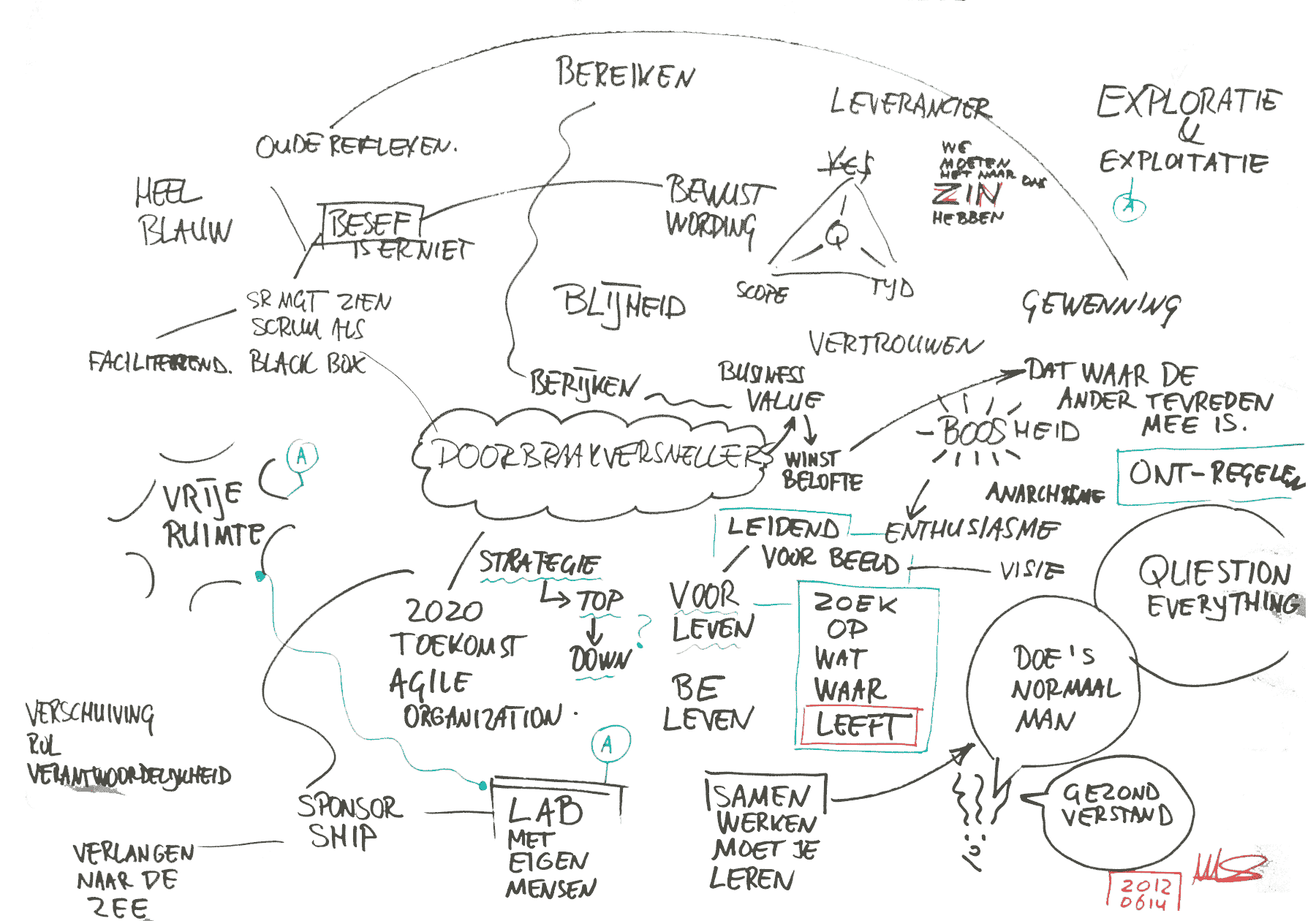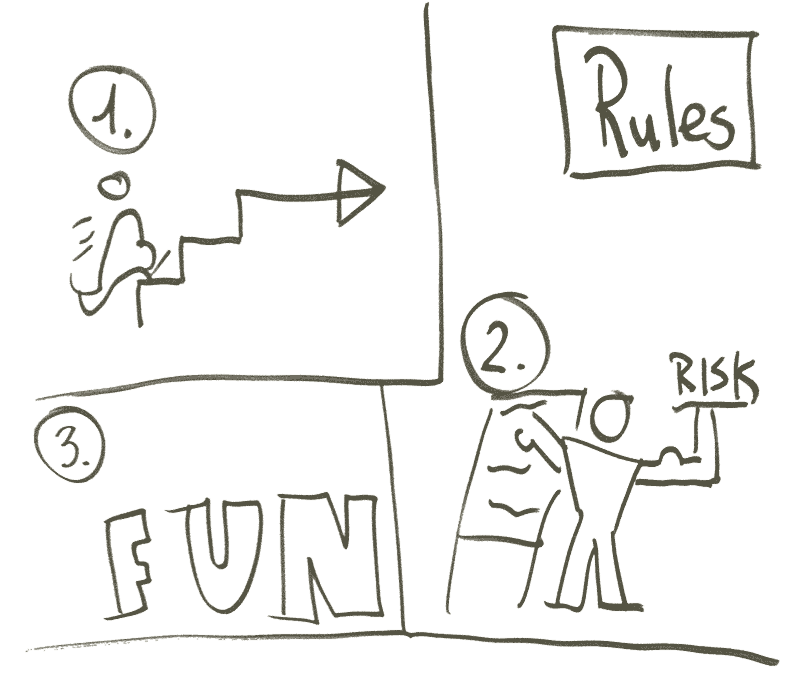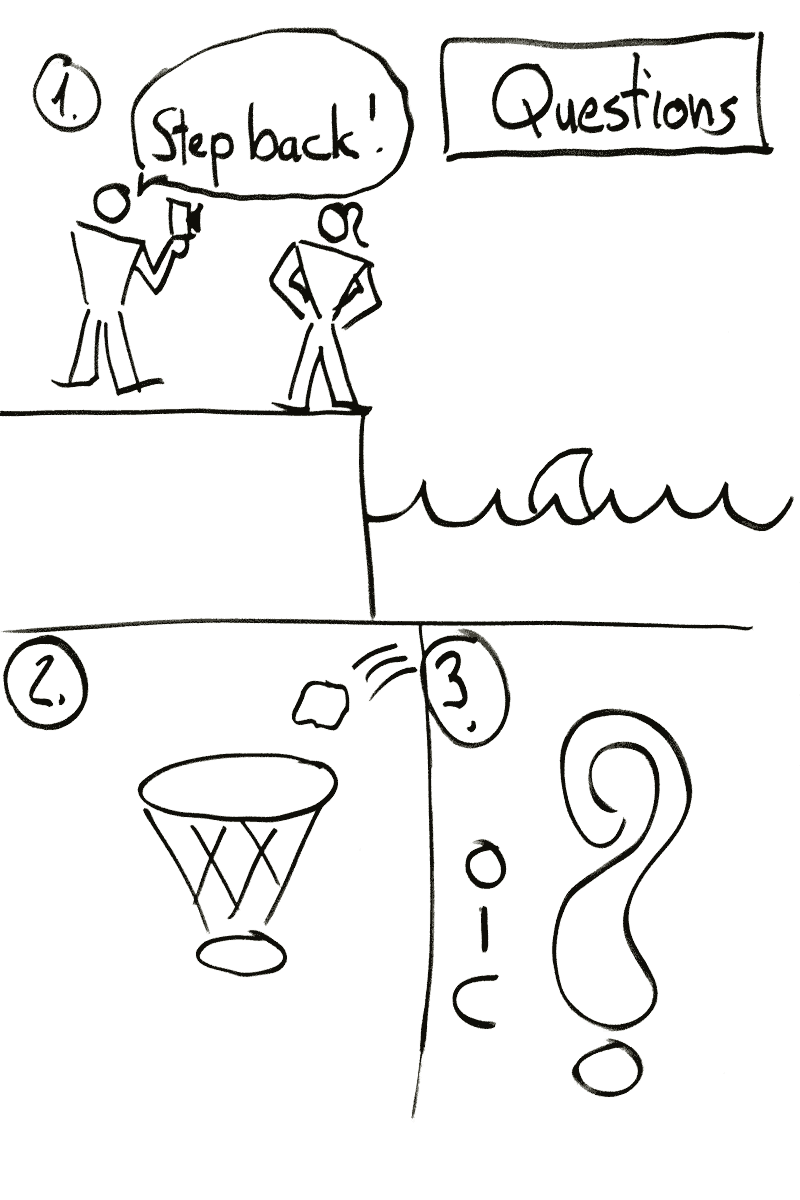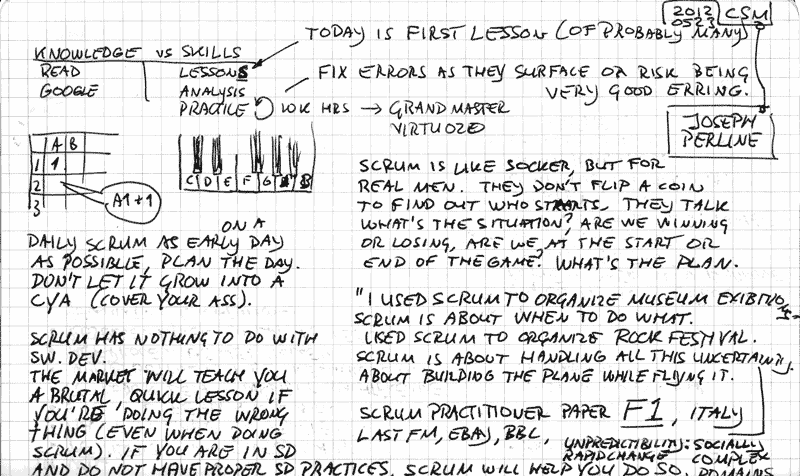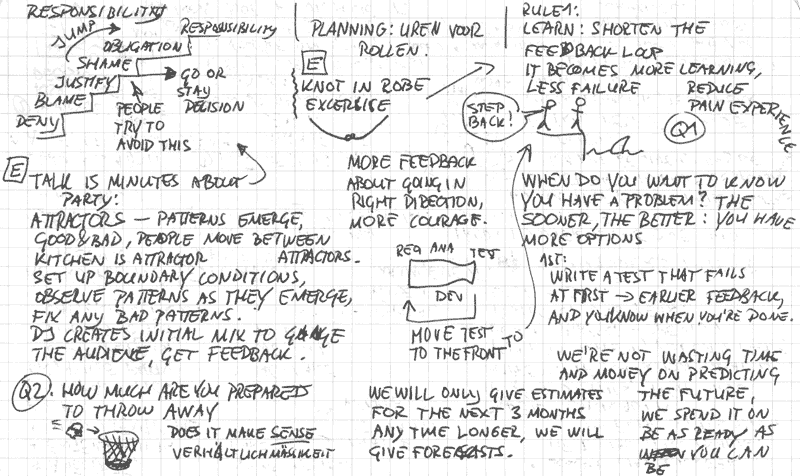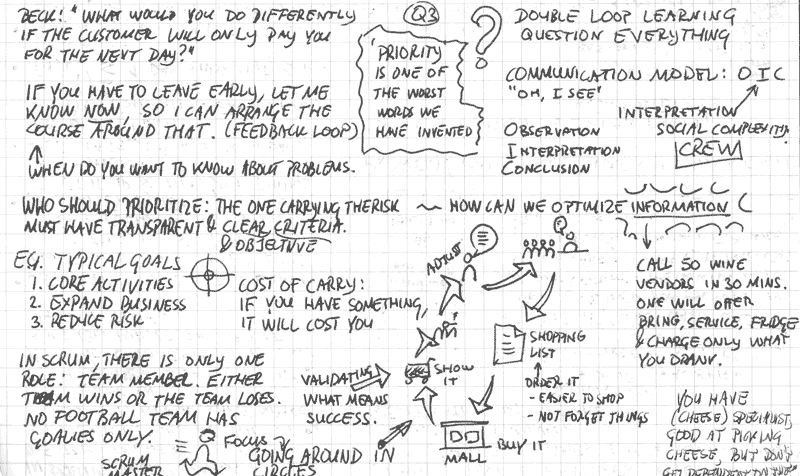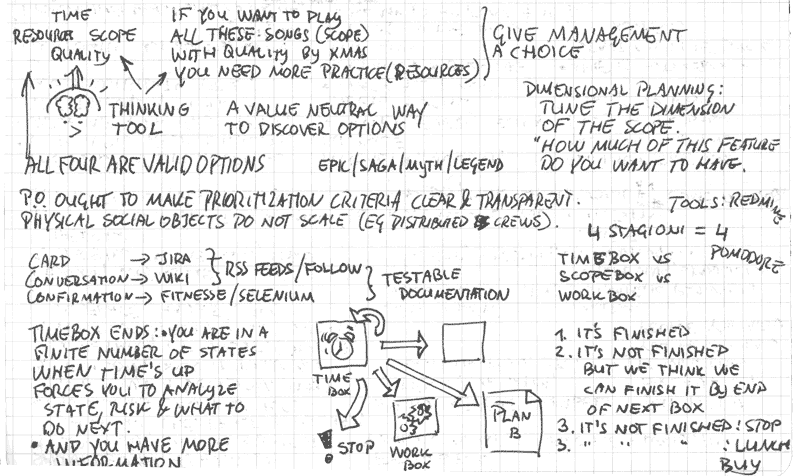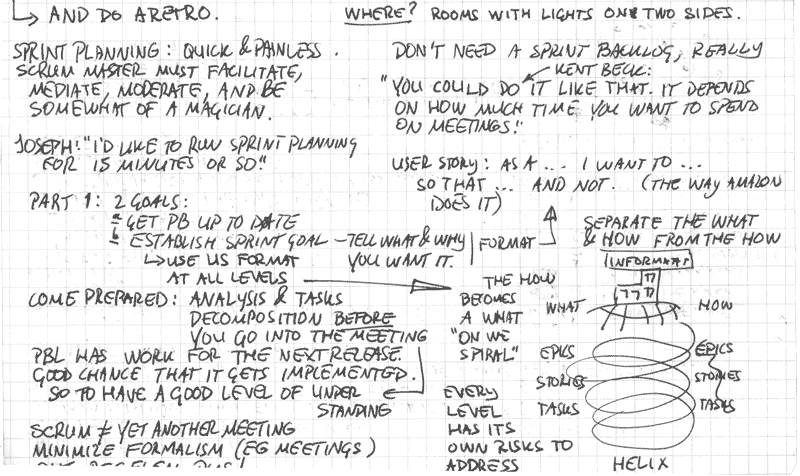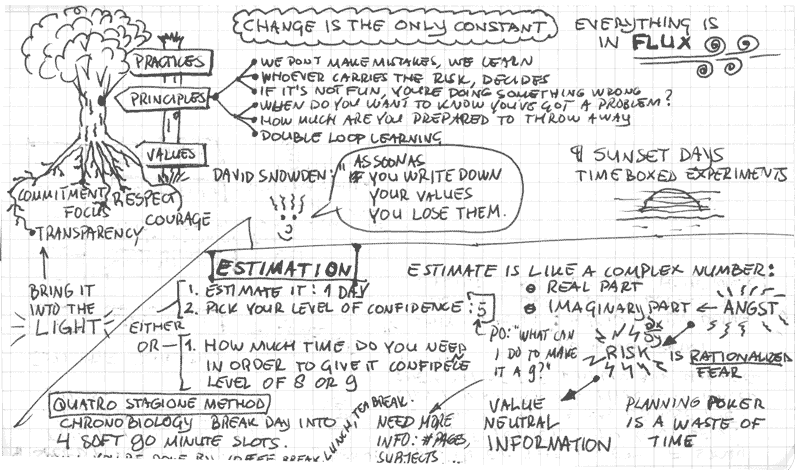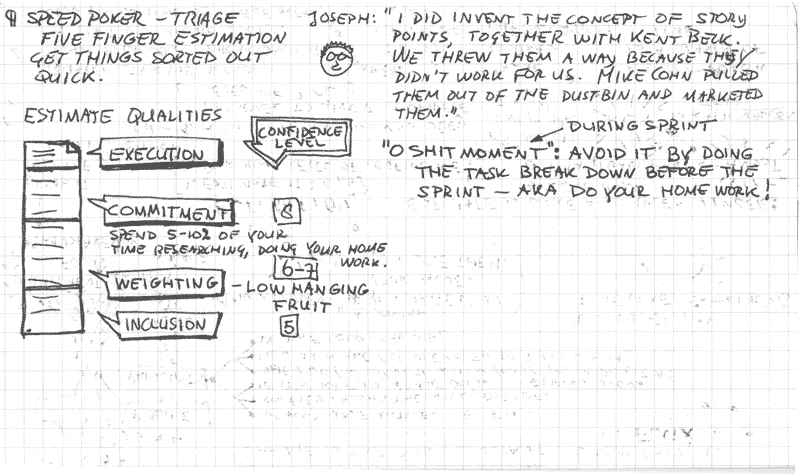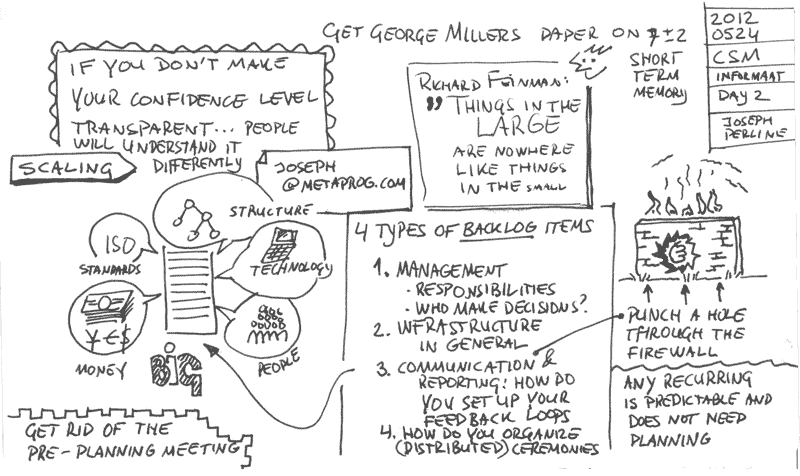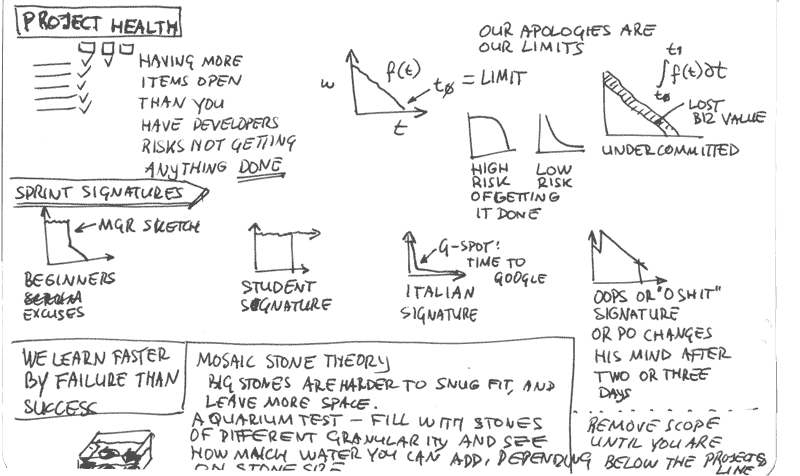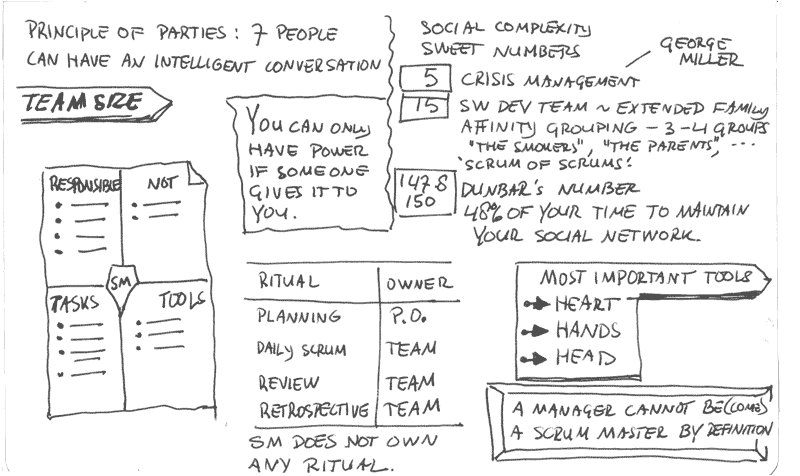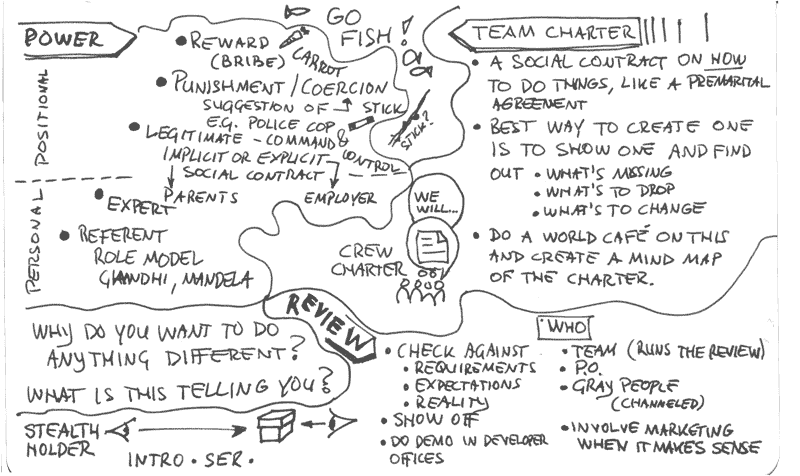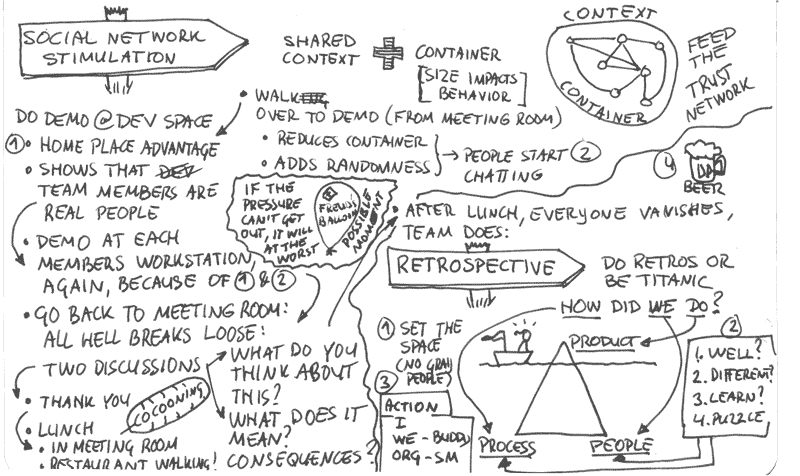Text below is a raw dump of the notes I took while watching the talk.

Formal Theory of Fun & Creativity, Jürgen Schmidhuber
More on:
[03:35]
Novel patterns: sounds like a paradox to me.
To compute Rint, two questions:
- What is a pattern? Data that one can compress: raw data expressible by less data.
- When is it novel? Degree of novelty = number of saved bits = Fun = Rint
Subjectively novel if compressor is able to improve through learning because of a previously unknown regularity.
E.g. the fractal formula that describes broccoli because it’s self-similar. A small piece of code computes into something elaborate.
There are zillions of patterns already known, so not novel, therefore not rewarding. not fun.
So, how do you recognize a novel pattern? By recognizing that the compression algorithm you use to encode or compress is not constant, not the same all the time, but it improves through learning. In this way, it becomes a better compressor.
E.g. saving three bits by an improved compression by learning is your intrinsic reward, Rint.
You want to maximize Rint.
Science, art, and humor are driven by Rint for finding and creating novel patterns.
Physics: create experimental data obeying a previously unknown law, some pattern that you previously did not know. E.g. discovering the law of gravity by ten falling apples. The law of gravity is an elegant piece of code or pattern describing any falling object in a very terse way. [Boy, what fun.]
Music: find or create regular melody and rhythm not exactly like the others. Find something unusual but regular, known but new. [Again, the paradox shows up. Seems like Fun & Creativity have to do with paradoxes (and koans?).] So, it’s not random, but familiar and new.
Same in visual arts. Visual arts is about novel patterns. Make regular but non-trivial patterns.
[09:20]
To build a creative agent that never stops generating non-trivial & novel & surprising data, we need two learning modules:
- an adaptive predictor or compressor or model of the growing data history as the agent is interacting with its environment, and
- a general reinforcement learner.
The LEARNING PROGRESS of (1) is the FUN or intrinsic reward of (2). That is, (2) is motivated to invent interesting things that (1) does not yet know but can easily learn. To maximize expected reward, in the absence of external reward (2) will create more and more complex behaviors that yield temporarily surprising (but eventually boring) patterns that make (1) quickly improve. We discuss how this principle explains science & art & music & humor, and how to scale up previous toy implementations of the theory since 1991, using recent powerful methods for (1) prediction and (2) reinforcement learning.
Two learning modules:
- A learning compressor of the growing history of actions and inputs. Compression progress == Fun == Surprise.
- A reward or maximizer or reinforcement learner to select actions maximizing Expected Fun == Rint (+ Rext).
Whatever you can predict, you can compress.
B(X, O(t)) = –#bits needed by O’s compressor to quickly (in C steps) encode data (MDL: Minimum Description Length).
O’s compressor improves at t: Rint(X, O(t)) ~ B(X, O(t)) – B(X, O(t – 1)) = Fun =Reward for Actor.
When things (suddenly) become better explainable, expressable, compressible (needing fewer bits to encode the same thing than before), you’re having fun and create art.
You are after the first derivative: the change or delta end the compressibility.
[16:15]
Self-similar ‘femme fractale’ based on a very simple arc-drawing program.
Draw a recursive set of circles, and remove circles or arcs until you are left with a pattern that you already know, i.e. that makes sense to you, that has meaning in your realm or world.
Recursive application of harmonic proportions.
Create a graphical structure through Fibonacci rations nd the Golden or Divine Proportion.
Many artists claim the human eye prefers this ratio over others.
The ratios of subsequent Fibonacci numers are: 1/1, 1/2, 2/3, 3/5, 5/8, 8/13, 13/21… converge to the proportion ½ + ½√5 ≈ 1.609344… such that a/b = (a+b)/a.
Jokes (are very simple).
Every joke has a punch line—unexpected if you don’t already know the joke.
If you don’t know the joke, you need extra bits to predict the thing.
So, you predict something, but it’s not what you predicted, so you need extra bits to store the stuff that you did not predict well.
However, all the jokes are designed to relate the punch line back to the previous story in a way that human learning algorithms easy pick out. So the human learning algorithm kicks in and finds out that the punch line is related to the previous story (history) in a way that allow you to save bits, because all you need to do is to insert a pointer to the previous part of the story such that you can get rid of the extra bits that you didn’t know and didn’t expect and save bits! # of saved bits is Rint, the fun bit, the reward. That is what you are trying to maximize.
What reinforcement algorithms do is try generate more data which also has the property that it is fun.
Learning from previous things to predict what other things in the future might be possible which may not be novel anymore after that.
Recently I gave this talk to the king of Spain. Or he said he was the king of Spain. He said, if you are a scientist, then I am the king of Spain.
For artificial scientist, or artists: Which algorithms do we use for compressing the growing data history? Which actor/reinforcement learning algorithms and data selectors do we use to experiment and invent the future?
Learning algorithms (predictors of novel patterns) improve all the time. They constantly get better at getting better.
[22:00]
Whatever you can predict well, you don’t have to store, so you can compress it.
Likewise, what you cannot predict well, needs extra storage space.
So learning or prediction progress creates intrinsic rewards (fun!).
This sometimes helps speed up external rewards as well.
Neural nets are underestimated! Our fast deep nets just broke old handwritten digit recognition world records.
Deep neural nets with many layers, pre-trained. [software is executable knowledge, wisdom even]
You retrain these nets under supervision, but all of this is unnecessary.
Dan Ciresan, Üli Meier and Luca Gambardella are working on swarm intelligence, deep layers, etc.
No unsupervised training is necessary to achieve these results.
Resilient machines, robots, learn, update world model based on failed expectations, optimize, plan in model, execute. Continual self-modeling by Alex Förster. Damaged robot cannot drive anymore, learns neural self-model to detect this and self-heals.
Feed forward networks will probably not be good at compressing history.
You can use Recurrent Neural Networks to fix that.
RNNs are good at minimizing the difference between what you can predict and what actually happens. You can use them as time series predictors.
Then you can create a gradient program or algorithm space, you minimize, you compute the first derivative of your wish.
You get a space of programs [with RNNs] of which you can select a better program to predict the future so your wish may come true.
Alex Graves is now beating all connected handwriting recognition competitions using LSTM-RNNs.
No pre-segmented data; RNN maximise probability of training set labels. Much better than single digit recognition.
Alex also won all the Arabic handwriting recognition contests, despite the fact that he doesn’t understand Arabic.
RNNs capture patterns (frequently occurring combinations) to predict future events and self-correct them.
Use these patterns again and again to predict based on different input sequences.
Symbols and self-symbols are just natural by-products of historical compression. Symbolic computation.
Frequent observations are best—also neurally— encoded by storing prototypes.
One thing is experienced again and again as the agent interacts with the world: the agent itself.
Rint = Measure the relative entropy between priors and posteriors of 1) before and after learning.
Why are you looking here rather than there? Because here is some learning opportunity that you don’t find there. This is used to much improve eye-movement predictions.
I bet that at the end of program “while not condition do begin … end” the contents of adderss 23721 will be 5.
2002: left & right brain symmetric experiments: prediction of the outcome of experiments.
Both left and right brain can predict the outcome and disagree. Once the agree to disagree, they can run the experiment. They can bet, and one will be the—surprised—loser and one will be the winner. Winner sometimes gets copied over loser. The loser has to pay the winner.
One has a better model than the other.
The intrinsic reward is essentially moving form one guy to the other.
The sum of intrinsic rewards is always zero—what one gains, the other loses.
Each one is maximally motivated to create data that comes up with an experiment that the other finds attractive to the other but where both predict a different outcome.
If they both predict the same result, they are not interested in the experiment because there is nothing to learn, there is no fun.
Only when the predictions differ, you have the incentive to run the experiment, in order to have fun and learn.
That’s why the increase their repertoire of pluralistic programs, learning and building on the previously learned repertoire [and have fun!]
[So, different opinions are actually very valuable! They hold the option to create something new, to innovate, and to progress while having fun, provided you agree to disagree and do the experiment (trial run or proef op de som).
Just like a little baby that focusses on tiny bits to make progress.
The fun of improving motor skills. Why should anyone learn juggling? Learning motor skills is also driven by the desire to create novel patterns. Juggling is fun because it is regular and ypu get a lot of reward because it leads to a novel way of behaving and saves bits and adds to your existing patterns.
[Patterns == behavior; novel behavior → change; change is fun!]
Intrinsically motivated cumulatively learning robots.
Pieter Adriaans: beauty not very compressible, not incompressible, but somewhere in between.
Pleasingness is dependent on the observer: the amount of compression (the first derivative) is a measure for pleasure. That is why some things are pleasurable for some but not for others. It’s an inverse hyperbolic curve with a maximum. The maximum is (personally) subjective. And it is a dynamic thing—what once was interesting and fun, becomes standard and boring; you evolve.
The theory of humor is also based on unexpectedness. Why is something funny? Because it is unexpected, and you find a quick way to incorporate it as a new pattern, a new way of doing things. The fun part is in the progress of learning. Humor takes something that is incompressible at first, but then recognizes its compressibility and learns that into a new habit or trait. You save the bits. So the first derivative is the crucial thin.g It’s not the compressibility itself. It’s the dynamic process that leads to learning before and after compressing.
[So, life is a constant stream of novel patterns you experience. Life is a pattern generator, where a new pattern is only incrementally different from previous patterns.]
Q: So, why is everone still going to the Louvre to see Mona Lisa while you can see the same picture over and over again on the web?
A: Because the sensory experience of actually going to the Louvre creates a whole stream of novel patterns.
[This is why re-reading a book after a few years is also fun: your paradigm has changed, and therefore re-reading a book creates novel patterns.]
